 |
 |
 |
| |
Efficacy and safety of darunavir/ritonavir 800/100mg once-daily versus lopinavir/ritonavir in treatment-naïve, HIV-1-infected patients at 96 weeks: ARTEMIS (TMC114-C211)
|
| |
| |
Reported by Jules Levin
48th Interscience Conference on Antimicrobial Agents and Chemotherapy, and the 46th meeting of the Infectious Diseases Society of America,Washington, DC, USA, October 25-28 2008.
Anthony Mills,1 Mark Nelson,2 Dushyantha Jayaweera,3 Kiat Ruxrungtham,4 Isabel Cassetti,5 Pierre-Marie Girard,6 Cassy Workman,7 Inge Dierynck,8 Vanitha Sekar,9 Carline Vanden Abeele,8 Ludo Lavreys8
1Private Practice, Los Angeles, USA; 2Chelsea and Westminster Hospital, London, UK; 3University of Miami, Miami, FL, USA; 4HIVNAT, Thai Red Cross AIDS Research Centre and Chulalongkorn University, Bangkok, Thailand; 5Helios Salud, Buenos Aires, Argentina;
6H˘pital Saint-Antoine, Paris, France; 7Ground Zero Medical Centre, Darlinghurst, Australia; 8Tibotec BVBA, Mechelen, Belgium; 9Tibotec Inc., Yardley, PA,
Summary
ARTEMIS: Summary of Week 96 analysis
This 96-week analysis of the ARTEMIS (TMC114-C211; AntiRetroviral Therapy with TMC114 Examined In Naïve Subjects) trial demonstrates that darunavir with low-dose ritonavir (DRV/r) 800/100mg is an effective treatment option for antiretroviral (ARV)-naïve patients.
Once-daily DRV/r showed significantly greater virologic response rates than lopinavir with low-dose ritonavir (LPV/r) at 96 weeks
- 79% of DRV/r patients had HIV-1 RNA <50 copies/mL vs 71% of LPV/r patients (difference = 8.3%, 95% confidence interval [CI]: 1.8-14.7; intent-to-treat/time-to-loss of virologic response [ITT-TLOVR], p=0.012).
Once-daily DRV/r 800/100mg was generally safe and well tolerated, with few treatment discontinuations
- grade 2-4 diarrhea at least possibly related to treatment occurred less frequently with DRV/r than LPV/r (4% vs 11%; p<0.001)
- DRV/r compared with LPV/r was associated with smaller median percent increase in triglycerides (12 vs 50%; p<0.001) and total cholesterol (15 vs 23%; p<0.001) and levels remained below National Cholesterol Education Program (NCEP) cut-offs
- based on NCEP criteria, fewer DRV/r than LPV/r patients had abnormally high total cholesterol (37% vs 47%; p=0.0058) and triglycerides (41% vs 56%; p<0.0001).
DRV/r superiority was driven by better virologic response and fewer discontinuations due to adverse events (AEs) compared with LPV/r.
Once-daily DRV/r offers a new, effective, well tolerated once-daily
first-line treatment option for treatment-naïve patients.
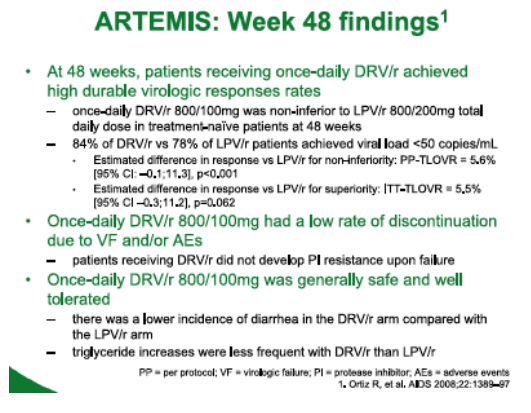
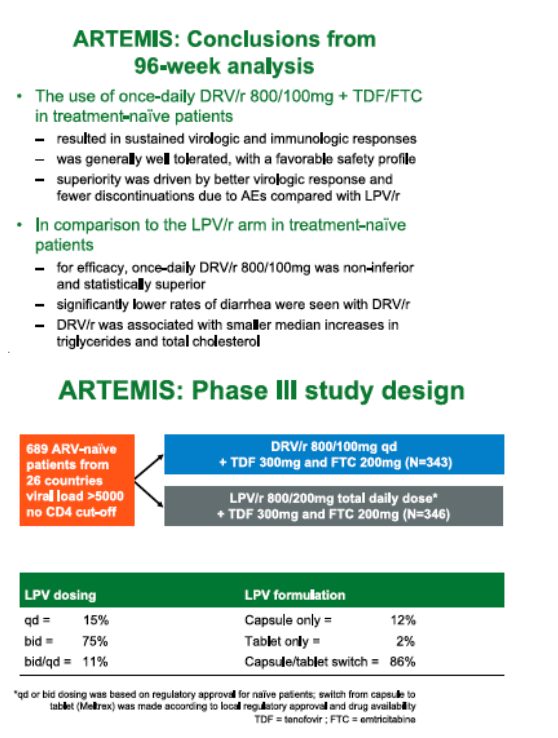
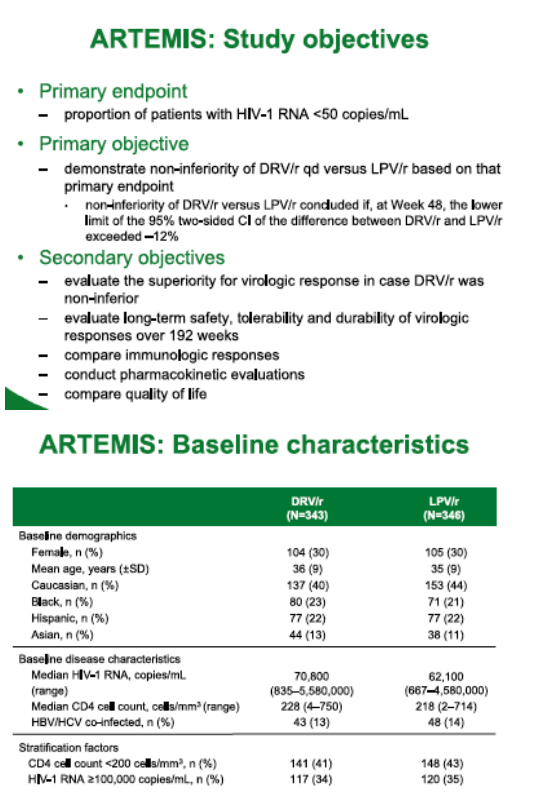
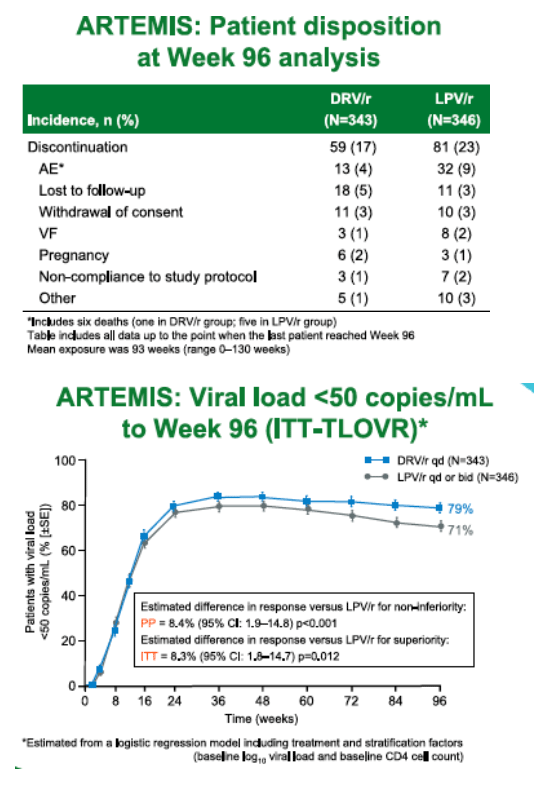
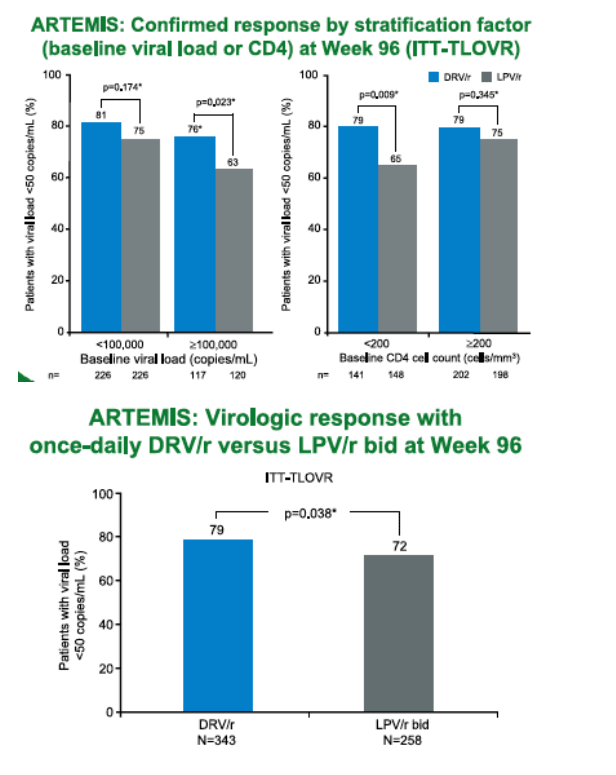
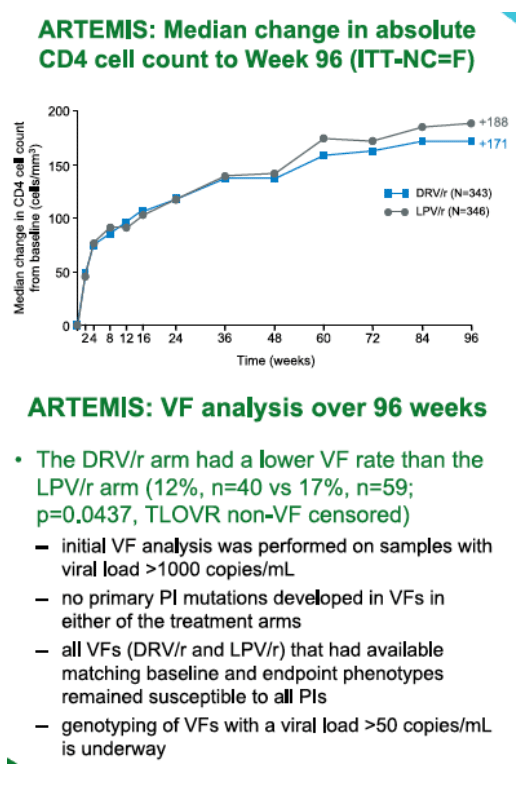
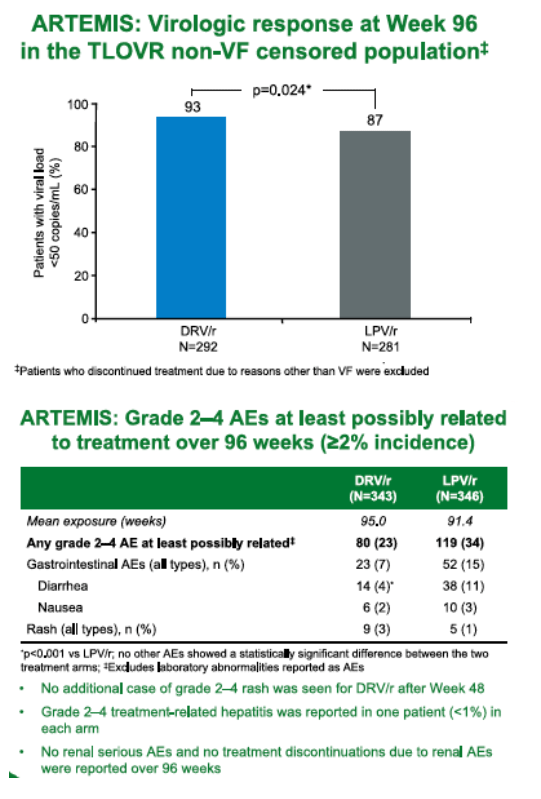
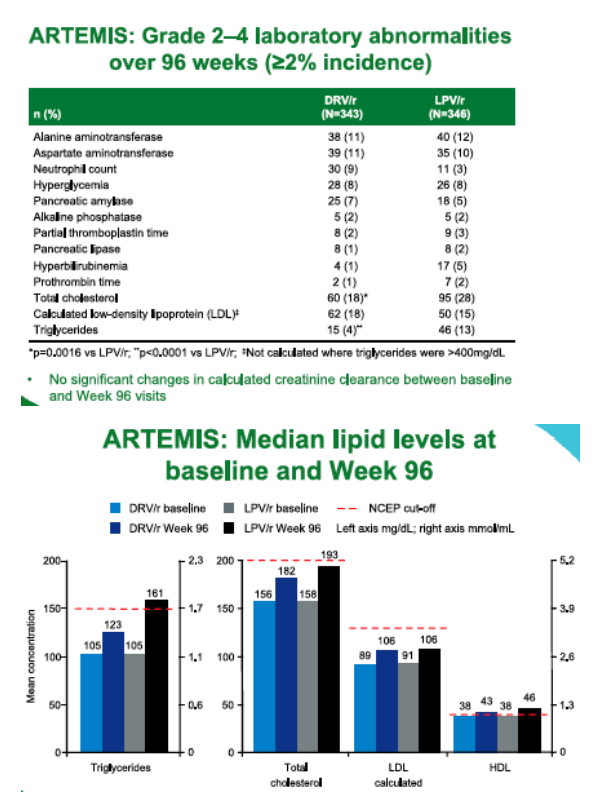
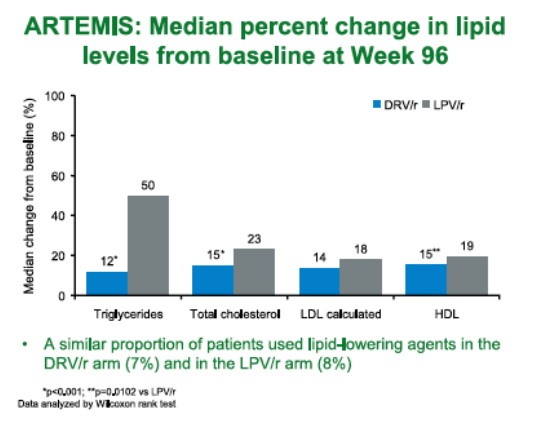
|
| |
|
 |
 |
|
|